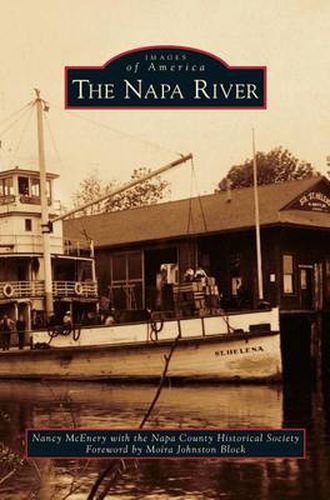Readings Newsletter
Become a Readings Member to make your shopping experience even easier.
Sign in or sign up for free!
You’re not far away from qualifying for FREE standard shipping within Australia
You’ve qualified for FREE standard shipping within Australia
The cart is loading…






This title is printed to order. This book may have been self-published. If so, we cannot guarantee the quality of the content. In the main most books will have gone through the editing process however some may not. We therefore suggest that you be aware of this before ordering this book. If in doubt check either the author or publisher’s details as we are unable to accept any returns unless they are faulty. Please contact us if you have any questions.
During the mid-1800s, the Napa River brought people to Napa City from around the world, attracted by the beauty and bounty of the valley. Riverboat captains played a major role in creating the material wealth of the city as their vessels plied the waters of San Francisco Bay carrying freight and passengers. As the powerhouse of industry, the river attracted several tanneries that needed water to make the now famous Nappa leather. Napa became a leather colony with the growth of shoe, glove, and glue factories. The river became a key transportation artery, and its channel became the focus of greater dredging to allow larger ships to anchor downtown. No longer a natural river able to meander, it frequently overran its banks, flooding towns. Industry, agricultural runoff, and population growth caused the Napa River to become polluted and neglected into the 20th century. Today, the Napa River is the centerpiece of downtown renewal. A Living River strategy is bringing back its vitality along with fish and wildlife populations, helping the river to regain its importance.
$9.00 standard shipping within Australia
FREE standard shipping within Australia for orders over $100.00
Express & International shipping calculated at checkout
This title is printed to order. This book may have been self-published. If so, we cannot guarantee the quality of the content. In the main most books will have gone through the editing process however some may not. We therefore suggest that you be aware of this before ordering this book. If in doubt check either the author or publisher’s details as we are unable to accept any returns unless they are faulty. Please contact us if you have any questions.
During the mid-1800s, the Napa River brought people to Napa City from around the world, attracted by the beauty and bounty of the valley. Riverboat captains played a major role in creating the material wealth of the city as their vessels plied the waters of San Francisco Bay carrying freight and passengers. As the powerhouse of industry, the river attracted several tanneries that needed water to make the now famous Nappa leather. Napa became a leather colony with the growth of shoe, glove, and glue factories. The river became a key transportation artery, and its channel became the focus of greater dredging to allow larger ships to anchor downtown. No longer a natural river able to meander, it frequently overran its banks, flooding towns. Industry, agricultural runoff, and population growth caused the Napa River to become polluted and neglected into the 20th century. Today, the Napa River is the centerpiece of downtown renewal. A Living River strategy is bringing back its vitality along with fish and wildlife populations, helping the river to regain its importance.